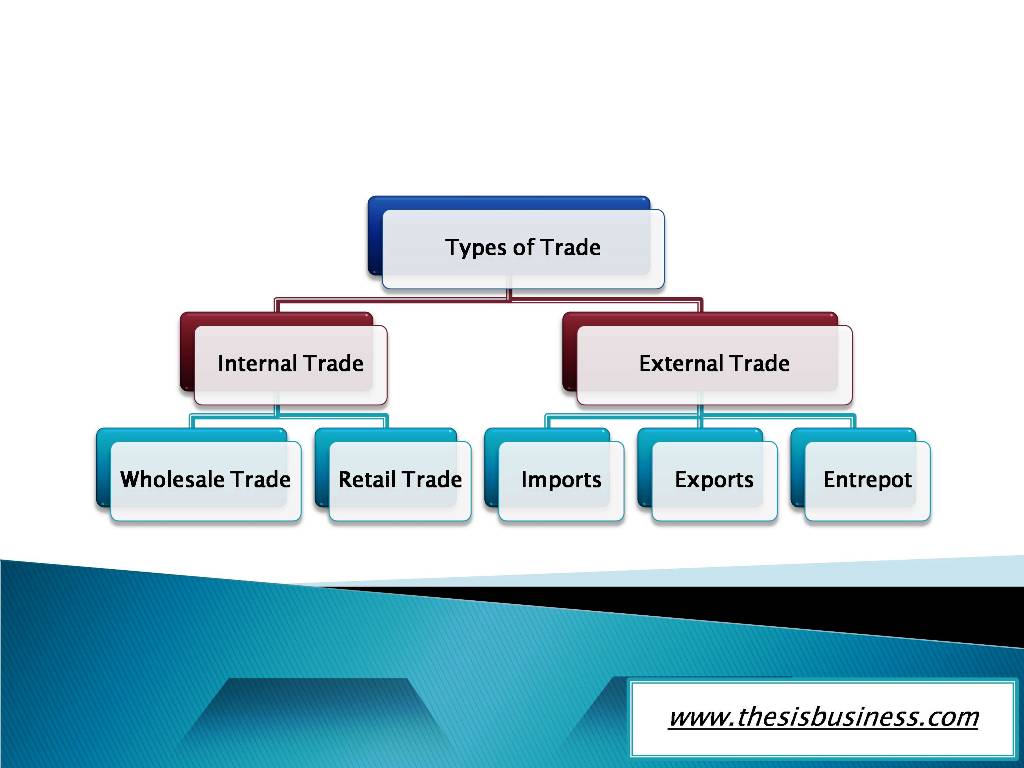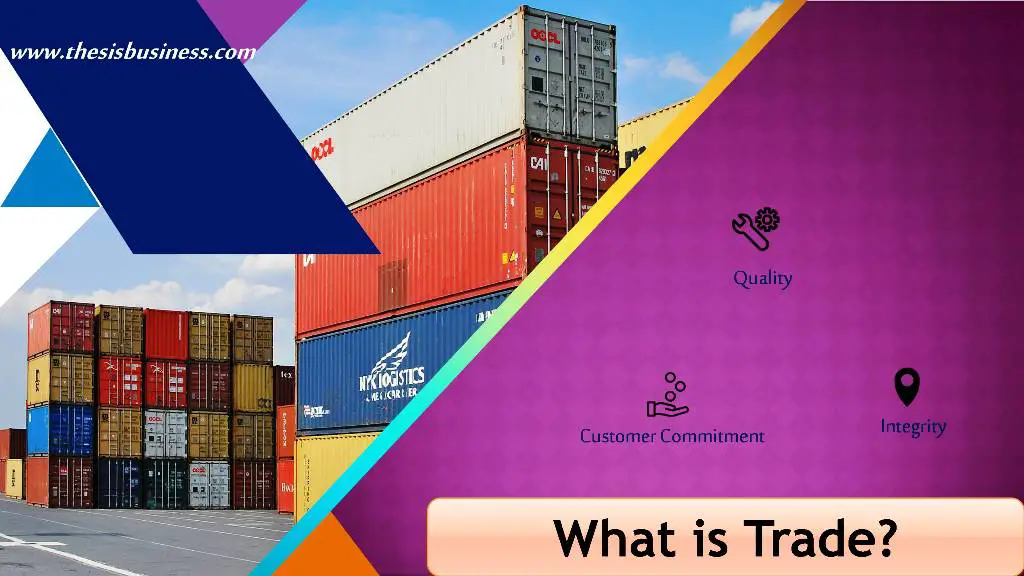Trade is a vital social activity because society requires a constant supply of things to meet ever-increasing, ever-changing, but never-ending human demands. Consumers and countries might be exposed to items and services that are not available in their own country through global trade.
Barter was an early form of trading. The exchange of products and services for other goods and services was known as bartering. Bartering is a method of exchanging goods without the use of money.
Table of Contents
Meaning & Definition –
The term ‘trading’ in its simplest form means ‘exchange of an item or commodity for another.
To trade is to willingly provide something or provide a service in exchange for something else. The buying and selling of commodities and services, with compensation provided by a buyer to a seller, or the exchange of products or services between parties, is a basic economic notion.
“The transfer of goods or services from one person or entity to another person, usually in exchange for money, is known as trade.”
Nature of Trade –
Countries trade with one another when they lack the resources or aptitude to meet their own needs and wants on their own. Economic specialization and trade, in which people concentrate on what they do best and then trade the results of their labour with others who are concentrating on their areas of excellence, results in much higher levels of production of goods and services as well as the most efficient use of labour and resources.
The markets of the “free market” system are created and sustained by this process. This system overthrew feudalism and ushered in the tremendous and revolutionary advances in living standards that characterize the modern era.
To put it another way, free and open trade has spurred dynamic competition, innovation, and economies of scale, allowing individuals and businesses to benefit from reduced costs and a wider range of options. Trade fosters international peace; in Europe, there have been no large-scale wars since WWII.
Trade, like technology, produces new, higher-paying jobs and increases consumer spending power by allowing them to purchase a larger range of goods at a cheaper cost. Imports also boost the manufacturing sector.
Types of Trade –
There are two types of trades as follows –
- Internal Trade
- External Trade

1) Internal Trade –
Internal trade, also known as domestic trade or home trade, is the buying and selling of goods and services within a country’s geographical boundaries. This can be broken down into two types: wholesale and retail. Internal trade begins with an individual or business within a country and finishes with consumption by the country’s domestic consumers.
It may occur between buyers and sellers in the same neighbourhood, village, town, or city; or it may occur between buyers and sellers in other states, but always inside the same country. This can also happen between two or more states, which is known as interstate trade but only inside the same country.
Internal Trade can further be classified into two categories –
- Wholesale Trade
- Retail Trade
a) Wholesale Trade –
Goods are typically purchased in large numbers from the producer in this type of trading. These items are then warehoused before being sold to retailers, middlemen, and merchants, among others.
They allow producers not only to reach a huge number of customers distributed across a big geographic area (through retailers) but also to fulfil a variety of other duties in the distribution process of these goods and services.
The goods sold in wholesale trade are not sold directly to the end-user. So a wholesaler’s customers are all commercial users or other intermediates, not the final consumers. Wholesalers play an essential role in connecting manufacturers and retailers.
All transactions in which things are purchased for resale, manufacture of other items, or general business are referred to as wholesaling. Merchant wholesalers, merchants, distributors, contract dealers, distribution branches, and offices for manufacturers are all examples of wholesalers.
Wholesalers usually take ownership of the products and incur the financial risks of buying and selling them in their own name. They buy in bulk from the manufacturers and sell in small batches to merchants and other industrial users. They engage in a variety of different actions to facilitate the sale, but the producers are not required to do so.
b) Retail Trade –
To go from the maker to the final consumer, all items pass through a distribution route. The retail trade, which is the final phase in the distribution chain, is an important cog of this machinery. The sale of items from a single point of purchase to a customer who wants to utilize it is known as retail. A catalogue, a brick-and-mortar store, or an online shopping website could all be used as a single point of purchase.
Retail is a wide phrase that refers to a massive industry that employs millions of people and generates trillions of dollars in sales income each year. The sale of items to consumers not for resale, but for personal use and consumption is known as retail.
Retailers rely on a system to provide items for them to sell to customers. Relationships with firms that operate inside the retail supply chain must be created to buy inventory and ensure they have the products they want to offer.
Manufacturers, retailers, wholesalers, and consumers make up the retail supply chain. The wholesaler is linked to the manufacturer directly, whereas the retailer is linked to the wholesaler.
2) External Trade –
International trade refers to cross-national economic exchanges. External trade is the exchange of goods and services between countries throughout the world. Products, such as television sets and apparel, are exchanged often, as are capital products, such as machinery, as well as raw materials and food. Other types of transactions include travel services and payments for foreign patents.
Inter-regional trade is another name for external trade. It entails the transfer of commodities and services between two or more nations. International financial payments, in which the private banking sector and central banks of different countries participate, promote international commerce transactions.
International commerce can benefit a country’s consumption as well as its production efficiency, allowing it to increase its living standards and productivity. Imports, exports, and entrepot are all part of it. External trade is primarily conducted to meet the needs and utility of resources of both parties.
External trade can be further classified as –
- Imports
- Exports
- Entrepot
a) Imports –
Imports are goods and services that citizens of a country buy from outside the country rather than buying domestically produced ones. Imports are more likely to be commodities or services that a country’s domestic industry cannot provide as efficiently or cheaply as the exporting country.
As import transactions include payments to sellers in another country, there is an outflow of funds from the country. Imports are goods that are made in another country and sold to people in the Domestic States. Five of the world’s largest importers include the European Union, China, the United States, Japan, and France.
For example, many countries cannot produce oil as efficiently, they thus tend to import oil as the local manufacturing may cost them high expenditures.
b) Exports –
Goods and services produced in one country and sold to buyers in another are referred to as exports. Businesses that sell their goods and services to customers in other countries are exporting them, which means they are made in one country and shipped to another. Exports are used to refer to the sale of tangible products such as energy, other commodities, parts and components, and finished things.
Businesses can quickly extend their market by exporting. International trade consists of both exports and imports. It is referred to as a trade surplus when a country’s exports exceed its imports. A trade deficit, on the other hand, occurs when imports exceed exports.
c) Entrepot –
The process of re-exporting commodities that have been imported into a country without any repackaging or other processing is known as entrepot commerce. The term ‘entrepot’
means entry-port-trade, when the package is sent out from that port, it avoids the payment of any import or export duties.
An entrepot, also known as a transhipment port or historically as a port city, is a trading station, port, city, or warehouse where items can be imported, stored, or traded before being re-exported with no further processing or customs taxes. In other terms, entrepot trade is the process of commodities being imported into one country from another.
Conclusion –
Trade is now at the heart of the global economy, and it is responsible for most of the modern industrialized world’s development and prosperity. Low tariffs and few non-tariff barriers assist countries with faster economic growth. More open-trade policies, on the other hand, promote freedom—including the protection of property rights and the freedom of ordinary people to buy what they believe is best for themselves and their families, despite attempts by special interest groups to limit that freedom.
International commerce not only improves efficiency but also allows countries to engage in a global economy, which encourages foreign direct investment (FDI). Billions of people all around the world have been able to escape the limits of subsistence farming and terrible poverty that have plagued humanity throughout history.
